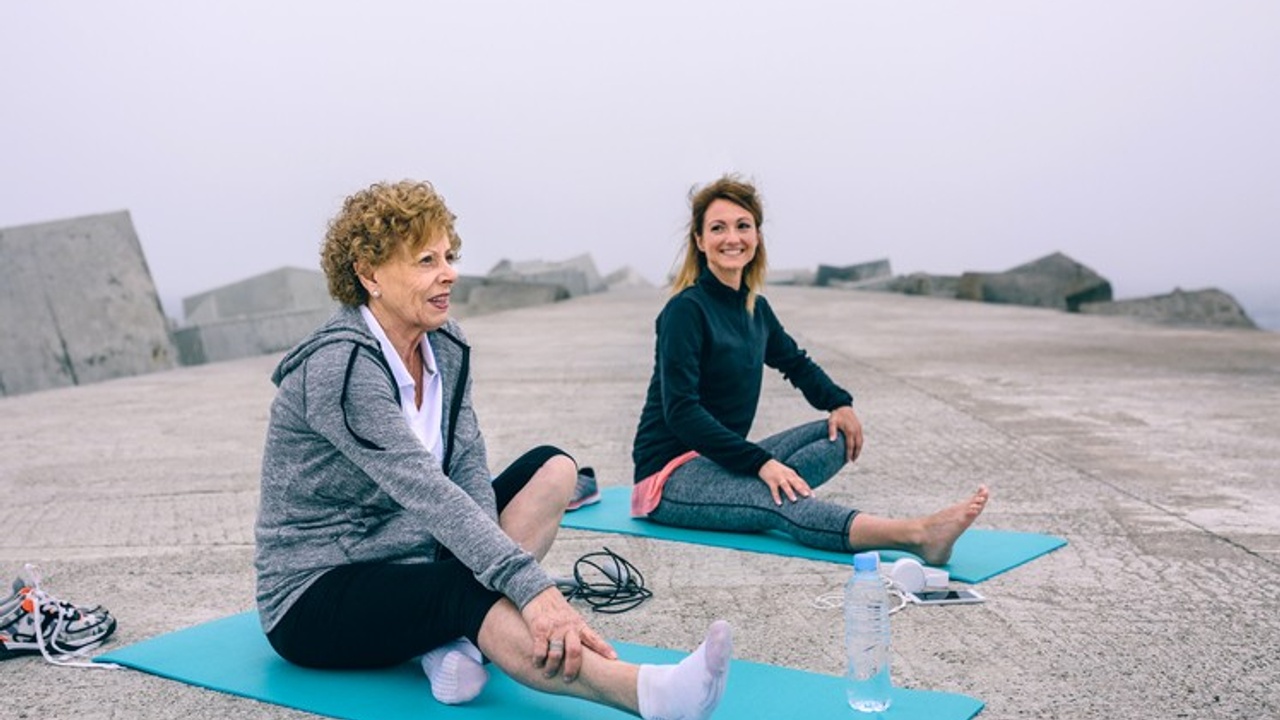While studying to be a Pilates teacher back in 2004 one of my course requirements was to observe experienced Pilates instructors working with their clients. This was a wonderful learning experience and at one particular studio, I was in awe of the number of clients who were successfully managing a major health condition thanks to Pilates. The majority were long-term clients of around 10 - 15 years. This makes sense because if Pilates was allowing them to live a full, enjoyable life pursuing their passions such as playing with their grandkids, travelling and playing tennis or golf, why would they stop? I've since had the same experience with my own clients who also discovered that Pilates was their secret weapon against so many preventable conditions and have made Pilates a way of life. Here are the 4 most common conditions that I help prevent or manage in my studio:
Osteoporosis
Maintaining bone health is not usually a priority for most people until they receive a diagnosis of osteopenia or osteoporosis. Bone is living tissue and among other functions is a storehouse for minerals including calcium. When you have low bone density your bones become brittle or porous and which means they are more susceptible to fracture. Bones can be strengthened by a Pilates program that includes weight-bearing, resistance, jumping and balance training to prevent developing osteoporosis. If you have already been diagnosed you can also actively work towards increasing your bone density with a Pilates program tailored to your individual needs. I've seen several of my clients really improve their bone density results with targeted Pilates training and Pilates really is ideal for this. If you would like to read more about osteoporosis and Pilates, read my blog Building Healthy Bones - A Pilates Perspective
Incontinence & Pelvic Floor Issues
I've seen varying statistics about the percentage of people who are dealing with incontinence or a pelvic floor issue in the general population, but I believe that these figures don't reflect the real number. After almost 16 years of working with clients who come to Pilates for vastly different reasons, I would say that the majority of clients have had either incontinence or a pelvic floor issue when they begin Pilates. With the exception of those who come to Pilates for this specific reason, the rest wouldn't have mentioned it, if I hadn't asked them about it. Many people are putting up with these issues because they don't know what to do, so have never sought help and therefore aren't reflected in the statistics. If left unaddressed this condition worsens with age so it's much better to begin strengthening with Pilates as soon as possible. Men can be affected after prostate surgery and women following pregnancy. Running and sports involving jumping such as basketball or sitting such as cycling can also put the pelvic floor under enormous strain. Pilates focuses on building core strength and the pelvic floor forms the base of the core, so it's the ideal way to build a strong, flexible pelvic floor both to prevent issues and to recover from existing ones. My blog post
Don't Ignore Your Pelvic Floor provides further details about this.
Lower Back Pain caused by Lumbar Disc Issues
This is by far the most common reason people start Pilates with me as Pilates is ideal for assisting people to gain the core strength they need to overcome and manage their pain. For some people, the pain is not limited to the lower back but can radiate down the leg, when a spinal nerve is being compressed. Surgery may have been suggested as the best solution. If you want to avoid surgery and have clearance from your medical practitioner to try Pilates, you may find you are able to strengthen your core and glutes sufficiently to become pain-free. So many of my clients have been able to do this successfully in the past and have become pain-free and don't require surgery. If this is an issue for you read my blog
Lumbar Disc Issues? Become Pian-Free with Pilates for more information.
Foot Pain
Our feet really are our foundation and the Pilates method includes foot strengthening and stretching exercises to maintain good foot health, especially we age. Achilles tendonitis and plantar fasciitis are 2 of the most common foot conditions that respond well to Pilates foot exercises. Weak feet can also contribute to knee and back pain and poor balance, so it makes sense to keep your feet in peak condition. We've all seen elderly people struggling to walk by shuffling along and their feet are locked up and their ankles have lost mobility. This is all entirely preventable with Pilates!
While these conditions can all be prevented with Pilates if you already have these conditions they can also be greatly improved with Pilates. In many cases, they can be brought under control and managed with ongoing Pilates training. Taking control of your own health and fitness really is a very empowering feeling. If you are ready to change your life with Pilates now,
take the free 10 day trial of JS Mind Body Pilates, my online Pilates studio. Alternatively, email me at
[email protected] if you have any questions or need more information about getting started with Pilates. I've assisted so many people to experience life-changing results with Pilates and It would be my pleasure to assist you on your Pilates journey too!
If you are ready to take control of your own health and fitness then download your free copy of my detailed guide.
Learn more about what sort of people benefit from Pilates and how it can help you too. I separate the myths from the facts and share actual case studies of my clients who have achieved life-changing results from my unique Pilates program.


